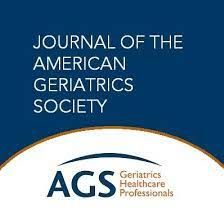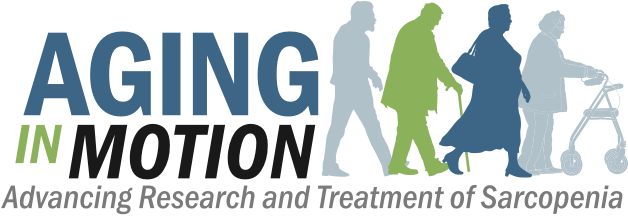
AIM Survey of Clinicians Published in JAGS
Washington, D.C. (March 2, 2023) – Sarcopenia is a condition that most people know little about, and it turns out, neither do medical professionals. A study in the current issue of the Journal of American Geriatric Society reveals that less than 20 percent of surveyed internists and family medicine physicians reported being very familiar with the term “sarcopenia.” Awareness is higher among geriatricians at 70 percent and physical medicine and rehabilitation specialists at 41 percent.
“Starting as early as age 30, we all begin to gradually lose muscle mass,” says Dr. Jack M. Guralnik, MD, MPH, PhD, lead author of the study published last month. “But for many older adults, this loss happens more quickly and can be more debilitating, leading to increases in falls, hospitalization, reliance on long term care, and even death. And it doesn’t have to be this way.”
Affecting 10 to 20 percent of older adults, sarcopenia is a serious condition that causes some people to lose muscle mass and strength at a faster rate than is typical for aging adults. This can impact quality of life and lead to a reduced ability to perform simple activities of daily living, disability, loss of independence, increased hospitalization, and an increased need for long-term care.
Older age, inactivity and lack of exercise, poor nutrition, and certain diseases and conditions increase risk. Symptoms of the condition include falling, muscle weakness, slow walking speed, self-reported muscle wasting, and difficulty performing normal daily activities. Treatments for sarcopenia include addressing potential underlying causes like malnutrition, cancer, and gastrointestinal disorders. Scientists have also found that exercise and nutritional interventions that deliver healthy diets, or nutritional supplements with key ingredients for muscle health, can slow the declines from sarcopenia, improve physical performance, and prevent future muscle loss
An online survey of 253 practicing physicians was conducted by the Aging in Motion Coalition and shows that while sarcopenia is receiving increasing attention from researchers, it’s penetration into clinical practice has been slow. Interviews and surveys conducted between August and October 2021 showed that in addition to low familiarity in some specialties, only 8 percent of respondents use the term sarcopenia in practice, only 24 percent utilize one or more of the standardized definitions, and only 35 to 39 percent use objective measures to make a diagnosis.
These findings all call for a unifying consensus definition and diagnostic criteria for sarcopenia. “This study is an eye-opening indicator of how overlooked and undertreated sarcopenia is,” says Dr. Guralnik. “Most older adults and their loved ones equate difficulty climbing stairs or rising out of a chair as inevitable with aging, when it really could be due to sarcopenia. A better understanding among the medical community can help.”
The Aging in Motion Coalition worked with the Centers for Disease Control and Prevention (CDC) in 2016 to create an ICD-10 code for sarcopenia. This officially made sarcopenia a reportable disease, increased diagnosis and treatment because it allowed medical professionals to bill for screening time and provided a way to collect data on sarcopenia.
“This survey and paper are important in underscoring the need for more awareness both of the general public and of the medical community.,” says Lindsay Clarke, JD, Senior Vice President of Health Education and Advocacy for the Alliance for Aging Research. “However, it’s important to note that the survey did reveal that physicians have appropriate concerns that motivate them to screen for muscle loss including wanting to prevent falls and injury, avoid loss of mobility and independence, and keep their patients out of the hospital. They also have appropriate recommendations for treatment with 50 percent pointing to physical therapy, exercise, dietary changes, and protein supplementation.”
The study, “Limited physician knowledge of sarcopenia: A survey,” is available via open access through support from the Alliance for Aging Research. Supplementary materials and the full research report are also available.
To learn more about sarcopenia, watch our short film, “Sarcopenia: Taking Charge of Your Muscle Health As You Age” or visit www.aginginmotion.org.

